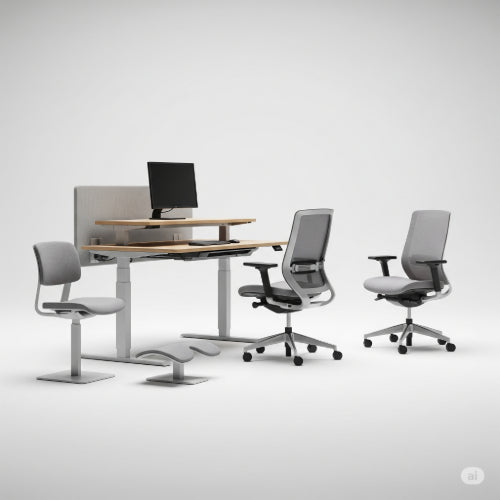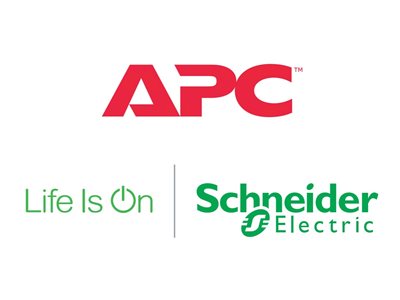Supporting Your Success: The Rise of Ergonomic Office Furniture and Its Benefits
In today's work landscape, where many professionals spend countless hours at their desks, the importance of a comfortable and supportive workspace cannot be overstated. Gone are the days of static, one-size-fits-all office setups. Instead, we're witnessing a significant rise in the popularity and adoption of ergonomic office furniture. This isn't just a fleeting trend; it's a recognition that prioritizing the well-being of employees directly contributes to their productivity and overall satisfaction.
So, what exactly is ergonomic office furniture, and why is it becoming so prevalent in modern workplaces?
What is Ergonomic Office Furniture?
Ergonomics is the science of designing and arranging things people use so that the people and things interact most efficiently and safely. Ergonomic office furniture, therefore, is designed to support the human body's natural posture and movements, minimizing strain and discomfort. This includes items like:
- Adjustable Chairs: Offering lumbar support, adjustable height, armrests, and seat depth to accommodate various body types and preferences.
- Sit/Stand Desks: Allowing users to easily switch between sitting and standing positions throughout the day, promoting movement and reducing prolonged sedentary behavior.
- Ergonomic Keyboards and Mice: Designed to reduce strain on wrists and hands, often featuring split designs, vertical orientations, and wrist rests.
- Monitor Arms and Risers: Enabling users to position their screens at an optimal height and distance to prevent neck and eye strain.
- Footrests: Promoting proper circulation and posture while seated.
The Driving Forces Behind the Rise:
Several factors are fueling the increasing demand for ergonomic office furniture:
- Growing Awareness of Health Risks: Extensive research has highlighted the negative health consequences of prolonged sitting, including back pain, neck stiffness, cardiovascular issues, and metabolic problems. This awareness has driven both employers and employees to seek solutions that promote well-being.
- Focus on Employee Well-being: Modern companies increasingly recognize that investing in employee health and comfort is not just a moral imperative but also a smart business strategy. Happy and healthy employees are generally more engaged, productive, and less likely to take sick leave.
- Increased Productivity and Efficiency: When employees are comfortable and free from pain, they can focus better on their tasks, leading to improved concentration, efficiency, and overall productivity.
- Legal and Regulatory Considerations: In some regions, there are regulations and guidelines related to workplace ergonomics, pushing organizations to provide suitable furniture and create a safe working environment.
- Technological Advancements: Innovations in design and manufacturing have made ergonomic furniture more accessible and aesthetically pleasing, fitting seamlessly into modern office spaces.
The Tangible Benefits of Ergonomic Office Furniture:
The benefits of implementing ergonomic office furniture are far-reaching:
- Reduced Musculoskeletal Disorders (MSDs): By providing proper support and encouraging healthy posture, ergonomic furniture significantly reduces the risk of common workplace injuries like back pain, neck pain, carpal tunnel syndrome, and other MSDs.
- Improved Comfort and Reduced Discomfort: Adjustable features allow individuals to personalize their workstations for optimal comfort, minimizing aches, pains, and fatigue throughout the workday.
- Enhanced Productivity and Focus: When physical discomfort is minimized, employees can concentrate better on their tasks, leading to increased efficiency, fewer errors, and higher quality work.
- Better Posture and Circulation: Ergonomic chairs and sit/stand desks encourage proper spinal alignment and promote better blood circulation, contributing to overall health and well-being.
- Increased Employee Morale and Job Satisfaction: Investing in ergonomic furniture demonstrates that the company cares about the well-being of its employees, which can lead to higher morale, increased job satisfaction, and improved employee retention.
- Reduced Absenteeism and Healthcare Costs: By preventing workplace injuries and promoting better health, ergonomic furniture can contribute to lower rates of absenteeism and potentially reduce healthcare costs for both employees and employers.
- A More Professional and Modern Image: Outfitting the office with modern, ergonomic furniture can project a forward-thinking and employee-centric image for the company.
Investing in a Healthier Future of Work:
The rise of ergonomic office furniture signifies a positive shift towards prioritizing employee health and well-being in the workplace. While the initial investment might seem like a cost, the long-term benefits in terms of reduced health issues, increased productivity, and improved employee morale far outweigh the expense. As our understanding of the impact of the work environment on our health continues to grow, ergonomic office furniture will undoubtedly remain a crucial element in creating comfortable, healthy, and productive workspaces for the future.







